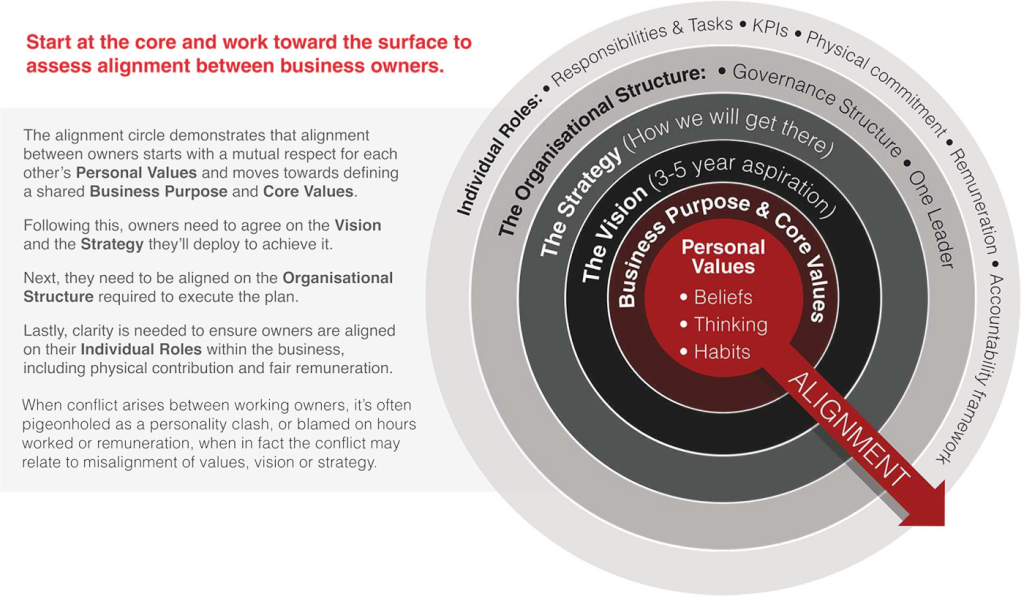Resolving Business Conflict with the Workplace Alignment Circle
Here at Accounting Solutions, we often have clients come to us facing conflict—conflict that may arise within their business. While it can sometimes involve employees, it’s not always limited to them.
Sometimes, the conflict is between the business owners themselves. Other times, it might stem from issues between different departments.
When addressing conflict, we always refer to a model we rely on: The Workplace Alignment Circle.

The Core: Personal Values
Most complaints often sit on the peripheral of the circle. However, we start by focusing at the core—the personal values of individuals within the business.
Misalignment with personal values can lead to behaviors, beliefs, and habits that cause friction. Our core personal values influence how we think and act, which in turn impacts how we engage with others.
Respect for these values is crucial. While values don’t always need to align perfectly, they must be respected.
Business Values and Purpose
Next, we look at the alignment of business values and business purpose—the “why” behind the business.
Why does the business exist? What is it truly serving?
Misalignment often occurs here. Departments, teams, or even owners may have differing views on the business’s purpose, causing friction.
Vision Alignment
Once values and purpose are aligned, we move to the next layer: the vision—where the business aims to be in the next three to five years.
Vision misalignment can create challenges. People thrive when they are part of a purpose larger than themselves. A clear, inspiring vision fosters unity and synergy.
Is your team aligned with the vision? Are the business owners and leadership on the same page?
Strategy: The Path Forward
With a vision in place, we focus on the strategy. This is the actionable plan to achieve the vision.
Conflicts can arise when different owners or departments pursue conflicting strategies. Ensuring strategic alignment is essential to avoid internal friction and to move forward cohesively.
Organisational Structure
Next, we examine the organisational structure.
It’s crucial to have clear leadership in place. We follow what we call the “10 Hats Principle”—each department must have one leader, and there must be a single CEO or leader guiding the entire organisation.
When multiple individuals attempt to lead simultaneously, conflict is inevitable. Ensuring clarity in leadership and roles is key.
Roles and Responsibilities
Finally, we focus on the team and the individual roles within it.
Does everyone understand their role, responsibilities, key performance indicators (KPIs), and tasks?
Clear role definitions and accountability are essential. If conflict persists despite this clarity, we return to the core of the Workplace Alignment Circle to reassess and resolve issues.
Need Help Resolving Conflict?
If your business is struggling with internal conflict, we’re here to help. Reach out, and let’s work together to restore alignment and harmony within your organisation.